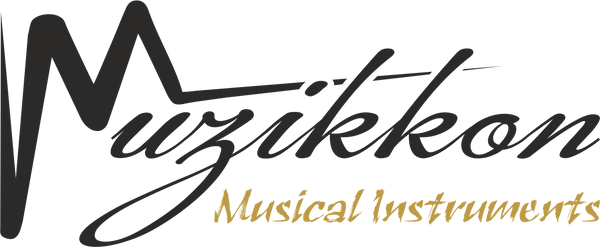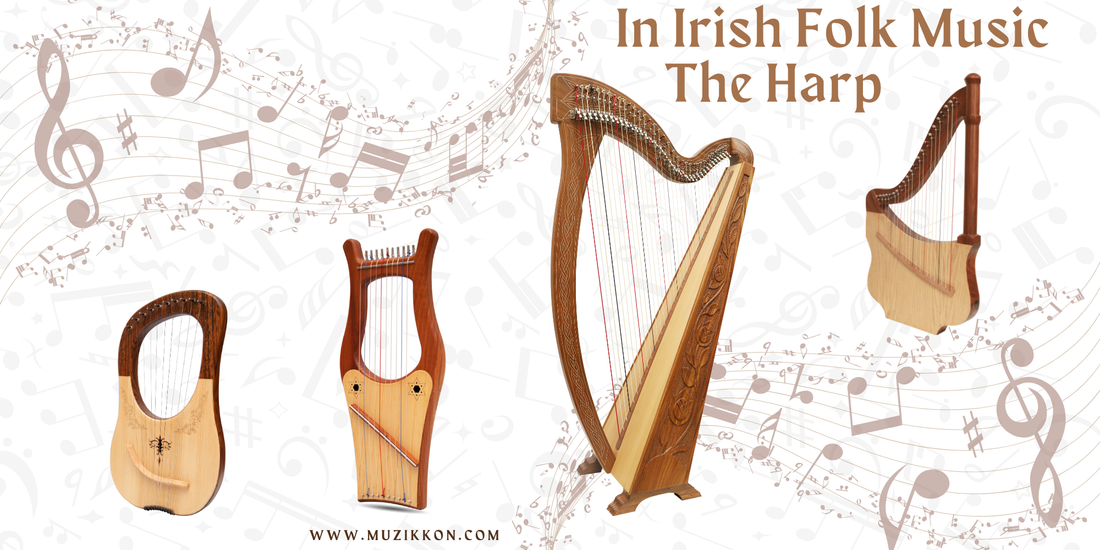Among the many instruments that echo the soul of Ireland, the harp holds a place of deep cultural significance. It is more than just a musical instrument—it’s a living symbol of Irish identity, storytelling, and heritage. For centuries, the harp has remained a central voice in traditional Irish music, resonating through historical gatherings, noble courts, and modern stages. Its gentle strings once accompanied poets, carried legends, and shaped a unique musical landscape that continues to evolve today.
At Muzikkon’s Dedicated Harps Page, you’ll find a rich variety of harps that echo this historical lineage, crafted to suit both learners and seasoned musicians. But to understand the harp’s enduring presence, we must first trace its roots and its role in Ireland’s musical fabric.
A Glimpse Into the Origins of the Irish Harp
The harp, or cláirseach in Irish, is one of the oldest instruments associated with Ireland. Its use dates back to at least the 10th century, with visual depictions and written accounts providing strong evidence of its role in Gaelic society. Unlike many other instruments that came and went, the harp stayed and evolved with Ireland's political and cultural shifts.
In medieval times, harpists held esteemed roles in Irish clans and were often attached to royal courts. These musicians were not just entertainers; they were storytellers and historians, entrusted with preserving tales and lineages through melody. Their harps were carved from native woods, strung with wire, and tuned to produce the melancholic tones that defined early Irish music.
Harp Suppression and Survival
Following the Tudor conquest of Ireland, the harp became associated with resistance and national pride. As English rulers sought to control Irish culture, harpists became targets. Laws were passed to diminish their influence, and many of their instruments were destroyed. Despite this, the harp never truly disappeared. Instead, it retreated into quieter spaces, held close by communities and passed down in oral tradition.
What followed was a long period of near-silence for the traditional Irish harp. While its influence endured in poetry and visual art, the instrument itself became a rarity. The 18th and 19th centuries saw an increased effort to preserve it, with early collectors and musicians attempting to record old melodies and reconstruct techniques.
The Irish Harp Revival
In the 20th century, a wave of renewed interest in traditional Irish culture led to a powerful harp revival. Folk musicians began incorporating the harp once more, blending old melodies with new interpretations. This revival was not limited to historical accuracy—it was about breathing life into a forgotten sound and placing it back at the heart of Irish music.
Today, the harp appears across genres—from folk to contemporary and classical performances. Musicians now explore not only the traditional wire-strung models but also modern variations such as lever harps and nylon-strung versions, making the instrument more accessible than ever before.
At Muzikkon Harps, this revival is well represented through a wide array of designs that bridge tradition and innovation. Whether you’re drawn to the rich overtones of a classic build or the versatility of a lightweight travel harp, there's a model that speaks to every level of interest.
🔗 Shop Muzikkon Harps
Exploring Harp Variants: Kinnor, Lute, and Lyre Harps
As the harp family grows, it embraces several unique branches, each with their own sonic identity and historical background.
Kinnor Harps
The Kinnor Harp, also known as the biblical harp, is a small and ancient form. While not native to Ireland, it shares characteristics with early Celtic harps, making it a popular choice for those looking to explore roots-style music and spiritual or historical compositions.
🔗 Shop Kinnor Harp
Lute Harps
The Lute Harp is a hybrid instrument that merges the warm tone of the lute with the elegance of harp construction. It’s an ideal option for players looking to explore Renaissance and early music styles alongside Irish folk melodies.
🔗 Shop Lute Harp
Lyre Harps
Equally intriguing is the Lyre Harp, a string instrument with deep ties to ancient European musical forms. The lyre’s structure is ideal for recreating early Irish tunes and experimenting with cross-cultural fusion in music.
🔗 Shop Lyre Harp
These variants expand the harp’s reach and appeal, inviting more musicians into the world of traditional and modern folk music.
Harps and Modern Irish Music
Modern Irish artists frequently incorporate the harp into their arrangements, often pairing it with vocals, fiddle, and flute. This inclusion has helped shift the harp from a niche instrument to one appreciated in broader folk circles and contemporary genres. Its sound—simultaneously bright and haunting—adds emotional depth to recordings and live performances.
Additionally, international interest in Irish music has propelled the harp to global stages. From Celtic festivals in North America to fusion acts in Japan and Scandinavia, the harp is seen as a cultural ambassador of Irish heritage.
Instrument makers such as those represented on Camac Harps bring this tradition into the present by creating harps that meet the needs of today’s musicians while respecting time-honored craftsmanship.
🔗 Shop Camac Harps
Teaching and Learning the Irish Harp Today
Thanks to the harp’s growing popularity, more learning resources are available than ever. Schools, online platforms, and community groups offer lessons that are both affordable and inclusive. Whether you're learning to play a 22-string beginner model or investing in a handcrafted wire-strung harp, the entry points are more accessible.
It’s also easier to find instruments suited to beginners and professionals alike. Muzikkon’s curated selection allows you to explore different harp types, helping musicians find the right balance of tone, portability, and tuning options.
Frequently Asked Questions (FAQs)
What is the difference between a traditional Irish harp and a modern lever harp?
Traditional Irish harps typically feature wire strings and a hollowed soundbox. They are played with fingernails to produce a bright, ringing tone. Modern lever harps often have nylon strings and include levers that allow quick key changes, making them more adaptable to various genres.
Is it difficult to learn the harp as an adult beginner?
Not at all. Like any instrument, it takes time and practice, but there are many harp models and learning resources tailored specifically for adult beginners. Starting with a smaller harp like a Lyre Harp or Kinnor Harp can be a comfortable way to begin.
Can the Irish harp be used outside of folk music?
Yes. While deeply rooted in traditional Irish music, the harp has found its way into jazz, classical, and even modern electronic compositions. Its versatility makes it a favorite among musicians looking to blend genres.
Where can I buy a quality Irish harp?
Muzikkon offers a diverse range of handcrafted harps, suitable for beginners, intermediate players, and professionals. Their collection features instruments inspired by tradition but built for modern use.
What is the best harp size for home practice?
For home use, smaller harps such as 22 to 27-string lever harps are ideal. They provide a good range of notes without taking up too much space, and many models are portable enough to move around easily.
A Continuing Melody
The harp’s story in Irish folk music is not just about preservation; it's about growth, adaptation, and passion. Today, musicians are not only revisiting old melodies but creating new ones that carry the same spirit forward. From historical roots to contemporary compositions, the Irish harp remains a vibrant thread in the cultural fabric of Ireland and beyond.
As interest in the instrument continues to grow, platforms like Muzikkon Harps play a vital role in supporting its legacy—offering instruments that respect tradition while catering to today’s musical needs. Whether you’re rediscovering a cultural connection or starting a musical journey of your own, the harp remains a faithful companion with centuries of stories still waiting to be played.

